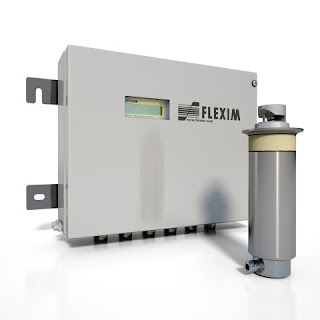Sponsored by M.S. Jacobs & Associates, a manufacturer’s representative and distributor of industrial instrumentation, control valves & process controls. Located in Pittsburgh, Pa. and covering Western Pennsylvania, West Virginia, and New York. Representing top lines in pressure, temperature, level, flow, analytical instruments and industrial valves.
Telephone: 800-348-0089 or MSJacobs.com
Showing posts with label in-line refractometer. Show all posts
Showing posts with label in-line refractometer. Show all posts
In-Line Process Refractometer
Refractometry, a combination of physics, materials, and chemistry, is a measurement technique which determines the composition of known substances by means of calculating their respective refractive indexes (RI). RIs are evaluated via a refractometer, a device which measures the curve, or refraction, resulting when the wavelength of light moves from the air into and through a tested substance. The unitless number given by the refractometer, usually between 1.3000 and 1.7000, is the refractive index. The composition of the substance is then determined with a comparison of the measured RI to standard curves developed for the substance. There are four general types of refractometers: digital, analog, lab, and inline process. Although refractometry can measure a variety of substances, the most common group of known substances to calculate is liquids. Liquid based continuous processes benefit from the use of an inline process refractometer to provide real time data about process output or intermediate steps.
The ultimate focus of industrial refractometry is to describe what is in a final product or output of a process step. A field which relies directly on the results of refractometry is gemology. Gemological refractometry is crucial for accurately identifying the gemstones being classified, whether the gemstones are opaque, transparent, or translucent.
Other common examples of industrial refractometry uses include measuring the salinity of water to determine drinkability; figuring beverage ratios of sugar content versus other sweeteners or water; setting eye-glass prescriptions; understanding the hydrocarbon content of motor fuels; totaling plasma protein in blood samples; and quantifying the concentration of maple syrup. Regarding fuels, refractometry scrutinizes the possible output of energy and conductivity, and for drug-testing purposes, refractometry measures the specific gravity, or the density, of human urine. Regarding food, refractometry has the ability to measure the glucose in fruit during the fermentation process. Because of this, those in food processing can know when fruit is at peak ripeness and, in turn, also understand the most advantageous point in the fruit’s lifetime to put it on the market.
The determination of the substance composition of the product examples listed above all speak to the purpose of quality control and the upholding of standardized guidelines. Consumers rely on manufacturers not only to produce these products safely and in vast quantity, but to deliver the customer a consistent taste experience when the product is consumed. Brand marketing success relies on maintaining the standards for the composition of substances that comprise the product. One could argue that an in-line process refractometer is actually a marketing tool of some sort, at least to the extent that it is employed to maintain consistent product quality.
Equipment manufacturers have developed numerous refractometer configurations tailored to specific use and application. Each has a set of features making it the advantageous choice for its intended application. Product specialists can be invaluable sources of information and assistance to potential refractometer users seeking to match the best equipment to their application or process.
Inline Refractometers Used in Commercial Food and Beverage Production
 |
| Hygienic process in-line refractometer with control unit and flow cell Courtesy Flexim |
Refractometry is a useful measuring method for many liquid processing operations. It is used for concentration and density analysis of process liquids. Portable sample processing units are available, but high volume continuous flow operations benefit from the use of in-line refractometers that do not require manual sampling and handling of process liquids. The measurements are produced in real time to continuously verify the fluid quality characteristics.
Food and beverage manufacturers use refractometry to determine the concentration of sugar, ethanol, ascorbic acid, pectin, artificial sweeteners and other components in their products. Close control of component concentration is a necessary part of delivering a consistent taste in finished products. Large investments are made to establish brand name products, and delivery of a consistent customer experience each time a product is consumed is key to developing and growing a brand. This is a solid example of a marketing based application of science and technology to industrial processing.
In-line refractometers for food and beverage applications will have specific features and construction to make them suitable for hygienic processing. The avoidance of contamination is first and foremost a requirement. Additionally, design features that reduce maintenance requirements and retain the needed measuring accuracy through extended periods of usage add value to the unit and should be a consideration when selecting an in-line refractometer.
Share your in-line refractometry applications and challenges with product specialists, combining your process experience and knowledge with their product application expertise to develop effective solutions.
Subscribe to:
Posts (Atom)